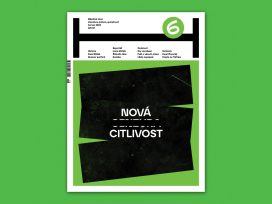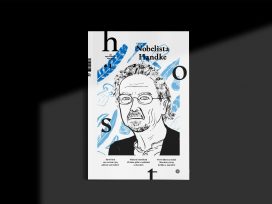The opposition Tolstoy-Dostoevsky will probably never cease to fascinate readers and interpreters. Different personal dispositions, ways of life, and novel types, and yet men of the same period and country. According to Merezkovsky, Tolstoy is a visual, Dostoevsky an auditory type. We can hear because we can see with the former, we can see because we can hear with the latter. According to Stefan Zweig, the life of Tolstoy is “didactic, it is a textbook, a pamphlet, while Dostoevsky’s life is a work of art, a tragedy, a destiny”. Mikhail Bakhtin opines that Tolstoy’s novels are mostly based on a thesis, whereas Dostoevsky’s novels are dialogical, internally polyphonic. It would be a truly hard task for whoever would like to counter-argue by claiming that the writers are more similar than different. Let us try to create a model reader of either instead. Tolstoy’s reader: a partner, whom we need to trust, but often only in order to be able to convince him/her about a certain moral standpoint in a later phase. Dostoevsky’s reader: a soul mate who is willing to entrust the author with his or her well-being and let themself be led into vertiginous heights while running the risk of, at least, a fall or unwarranted landing on the ground. Pure intuitive types probably cannot accept Tolstoy as fully theirs, while people of a more leisurely, more relaxed nature with more trust in the world – i.e. those who do not believe that the outside, the social aspect, is but a makeshift phase of the inside, the mental – cannot accept Dostoevsky as their own author.
Tolstoy’s uniqueness lies in the fact that he – possibly as the last one – attempted to write a novel with the ambition to become an epopee(perhaps the very last echo of this ambition can be heard in Sholokhov’s The Quiet Don). He turned out to be a great master of the centre and balance – with the perceptiveness for an individual destiny as well as historical arches, for a showy life in the city as well as rural slowness, for counts’ and dukes’ intrigues as well as stifled dreams of simple maid-servants, for fashionable problems of the aristocracy’s overindulged sons but at the same time for people from the bottom. Tolstoy’s novels, even if a little static for our times, keep balance, they do not tilt towards grotesque (Gogol), satire (Saltykov-Shchedrin), lyricism (Turgenev), or exaltation (Dostoevsky). The swing of his narration is amazingly stable. The track is wide but clear-cut and not fuzzy. He perforce obtained his ticket to the novelistic hall of fame by his descriptions, that is, by the way he drew his characters.
Let us view at least one: “The Princess was a woman of about forty-five, small and delicate, with shrivelled skin and disagreeable, greyish-green eyes, the expression of which contradicted the unnaturally suave look of the rest of her face. Underneath her velvet bonnet, adorned with an ostrich feather, was visible some reddish hair, while against the unhealthy colour of her skin her eyebrows and eyelashes looked even lighter and redder than they would other wise have done. Yet, for all that, her animated movements, small hands, and peculiarly dry features communicated something aristocratic and energetic to her general appearance.” (Childhood – Boyhood – Youth, in Russian 1851-1856) Here we can find both empathy and irony, closeness and distance, a sense of an objectively given reality and an appraisal, the obvious and also the hidden. Balzac would set the description of Duchess Kornakova in a socio-economic register; the duchess would be unequivocally classified, which also means evaluated from the point of view of her ambitions. Flaubert would make a portrait while letting his authorial stance vanish in a lavish play of details. In Dickens’s case such an “object” would undoubtedly be an opportunity for satire; and that is why the author would play around with the duchess to a larger extent in his narrative. Tolstoy, on the contrary, remains in balance, i.e. in a position from which most can be said and from many different viewpoints.
One of the most affecting scenes in Anna Karenina (in Russian 1878): Anna is arriving in St Petersburg from Moscow, where she paid a visit to her brother’s family. She is coming back home, already enchanted by Vronsky but it has not come to anything between them yet. Anna’s husband is waiting at the station. Anna greets him but can see something strange about him: his earlobes “propping up the brim of a bowler hat”. Strange ears. This is not only an overwhelmingly worked out piece of disenchantment but also a triumph of novel narration. Several perspectives meet in the small area of a station scene: Anna’s inner voice (dissatisfaction), her disenchanting look and its dramatically spotlighted object itself (earlobes). A film will never manage this. And what is more, the fatality given by the fact that the scene takes place at a station, which would later become the chosen location of Anna’s suicide.
Czeslaw Milosz runs a polemic against Bakhtin’s approach to Dostoevsky as a polyphonic novel writer. He argues that “his polyphonic quality” has “its limits”. “An ardent confessor, a Russian fin de siècle man and messianist is hidden behind it.” Yes, I also find Milosz’s characterization more accurate than Bakhtin’s. Bakhtin needed to liberate Dostoevsky from all possible interpretations based on a particular set of ideas, within the framework of which his novels would be read as proclamations of these ideas. A religious prophet, a reactionary tsarophile, a chauvinist in favour of Great Russia, an announcer of the deepest abysses of a human soul, etc., etc. No, Bakhtin holds, he is above all the one who gathers various types and views in his characters’ voices without leading them towards some ultimate and unique truth. However, the mark was overshot a little as part of this – basically defensive – interpretation. Bakhtin was also led to it by the fact that in Dostoevsky’s work the story is often directed as if by the characters themselves. We do not hit upon the narrator’s presence for many a long page. His role is often limited to scenic notes: “he said”, “he sneered”, “he cried out”, etc. But still, Dostoevsky’s novels have – besides that polyphonic (dialogical) quality stressed by Bakhtin – their authoritative monological quality as well. Of course, it is not based on a set of ideas nor is it narrowly moralistic. It is anthropological: Look what the human being is – a nasty treacherous animal, a humble penitent creature, a little knot of nerves and a saint at the same time; away from this world, the vale of tears, and let us expect redemption; is the godless world a place to live in?; oh, my holy Russia, how long do you have to bleed yet… These are not mere voices of a polyphonic novel symposium but voices that keep coming back, voices stuck in mind, leading, voices whose role is not limited to a polemic invocation of other voices only.
A few more words about the dialogical quality. It is a question whether the purpose of Bakhtin’s famous thesis is not to disguise, to some extent, the fact that – as regards narration – Dostoevsky was rather a “messy man”. He wrote in continuation, he needed money, he often collected advances for pages he had not actually written yet… On top of that – as people close to him and his biographers claim – after each fit of epilepsy he would lose contact with what he had already drafted out. He was frequently alleged to forget even some things from the story, previous deeds of his characters. It is definitely not on account of a contrived fabula and the unity of composition that Dostoevsky captivates us.
The cause of Dostoevsky’s messiness consists in hurry: for instance, he was forced to write The Gambler in one month in order to hand it in to a publisher before a deadline. In the opposite case, the publisher would have imposed a huge penalty on him. Anna Grigoryevna, Dostoevsky’s second wife, recalls that Dostoevsky “did not have any time or chance to brush up his works”. “It used to happen that the first three chapters of a novel had been published, the fourth was being set to print, the fifth was at the post, he was beginning to write the sixth, but he did not have any time to think about the remaining chapters yet. Many a time I witnessed his deep despair in those moments when he suddenly came to realize ‘he had spoilt an idea he valued so much’ and he did not have an opportunity to correct the mistake’.”
A conversation between Alyosha and Lisa from The Brothers Karamazov (1880):
“I have sent some bonbons to your brother Dmitry Fyodorovich in prison. You know, Alyosha, you are so sweet! I will like you so much for your allowing me so soon to fall out of love with you.”
“Why have you called me today, Lisa?”
“I wanted to tell you about a wish of mine. I want somebody to torment me to an end, to marry me, but then to torment me, betray me, walk away and leave for good. I do not want to be happy.”
Yes, Dostoevsky’s protagonists do not want, do not need and refuse to be happy: What use would they have for happiness? What a strange coin! They must torment and lacerate themselves. They actually are hysterical persons who are not only unable to fit into any role – unlike Balzac’s protagonists who attempt to master it – but not even into their own skin. Weird, unpleasant, incomprehensible, extremely alien in a way. It is not so difficult to understand how Dostoevsky can irritate someone (e.g. M. Kundera) by his overdone exaltation and stifling mysticism. But at the same time and by the same measure, it is not hard to make out how he can be the Great Initiator for others. And possibly the Only Great One.
This text is the eighth part of a series of reflections on the history and development of the novel.
Published 17 October 2006
Original in Czech
First published by Host 8/2006 (Czech version)
Contributed by Host © Jiri Travnicek / Host / Eurozine
PDF/PRINTNewsletter
Subscribe to know what’s worth thinking about.



